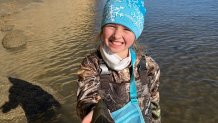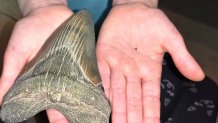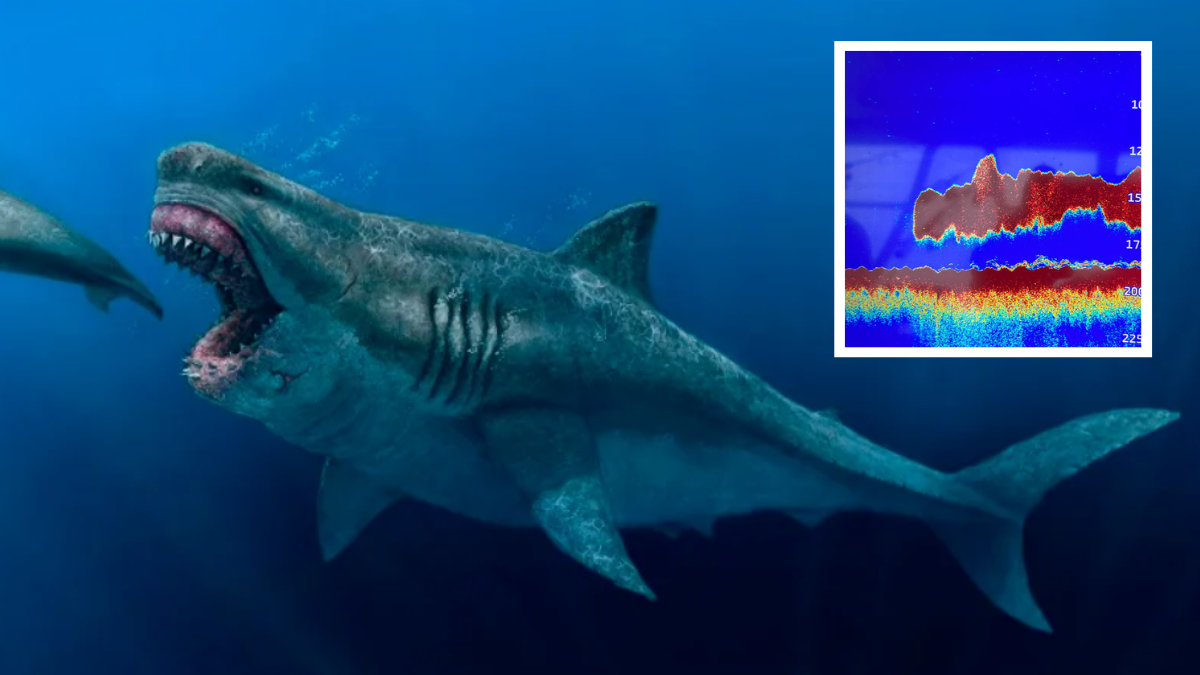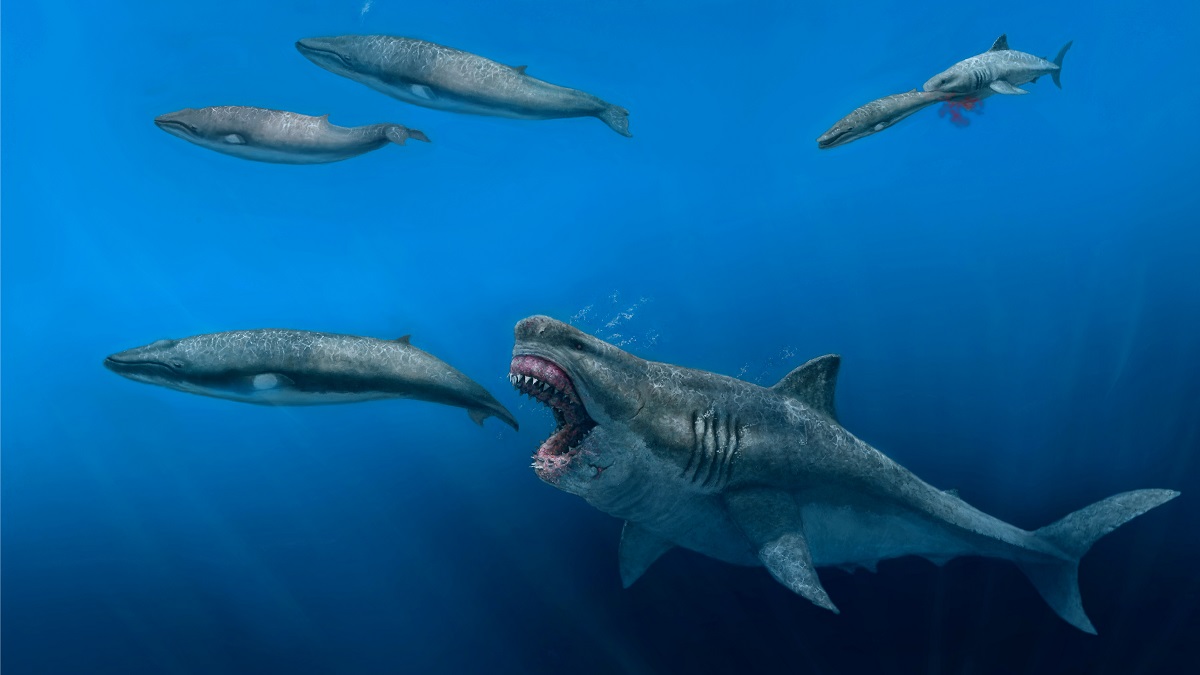Molly Sampson, age nine, knew exactly what she wanted for Christmas this past December: a pair of insulated wading boots.
With the boots, she told her mom, she could go out into the water at Calvert Cliffs State Park in Maryland and find more big teeth to add to her fossil collection.
When she got her present on Christmas morning, the Sampson family fossil-hunting team -- Molly, dad Bruce and older sister Natalie -- immediately set out for the cliffs in the below-freezing temperatures.

With the help of her present, Molly added something new to her collection of over 400 fossils: a five-inch, 15-million-year-old megalodon tooth.
"We went out shark's tooth hunting around 9:30, because it was a low tide," Molly said. "And we're wading out in the water, and I looked over and I looked down in the water and I saw it, and I reached in and grabbed it."

Megalodons are prehistoric giant sharks, and one of the biggest predatory fish of all time. According to researchers, megalodons could grow up to 50 feet, and cruised through multiple oceans at a faster average speed than sharks today.
They're hard to study because their skeletons were made of soft cartilage and don't typically turn into fossils. Their teeth are a little more common, especially along the Calvert Cliffs, but it's rare to find fossilized teeth as large as the one Molly plucked out of the freezing water on Christmas.

"I just saw the shape of it, and I know what the megalodon teeth look like," Molly said.
According to young fossil hunter Molly, the size of the shark is estimated based on the size of the teeth.

"Every inch is 10 feet," Molly said, spacing her fingers along the side of the tooth. "So this is five inches, so it'd be 50 feet, [a] 50-foot shark."
She's been interested in fossil hunting since she was just a year old, thanks to her dad, who taught her how to look for fossils and would take her out to the beach to search for teeth.

A photo of Molly as a toddler, hand-in-hand with her dad, Bruce, as they walk along the beach, is mom Alicia Sampson's favorite photo of the pair fossil hunting. It shows just how long Molly has been interested in them, too.
"I was so excited for her, because this was something that she always wanted to find," Alicia said. "And my husband has been looking for one since he was a little kid and never found one [that big]. So it was just really exciting for the whole family."
Alicia Sampson stayed inside that morning, where it was warm.
"I was like, there's no way I'm going out; it's so cold. So I stayed home and drank coffee, and like not even 30 minutes later he sends me this picture of her holding this tooth."
At first she thought it was a joke, or maybe Photoshop -- but it was real.
"The waders totally paid off," Alicia laughed.
The Sampsons were pretty sure, based on their years of fossil-hunting experience, that they'd found a megalodon tooth. But just to make sure, Alicia sent a picture to Dr. Stephen Godfrey, curator of paleontology at the Calvert Marine Museum.

"He told me he would be back in the museum on Jan. 3, so Jan. 3 we went as soon as they opened and brought him the tooth so he could, you know, confirm what it was," Alicia said. "And tell us more about it and how old he thought it was, which was pretty exciting, too."
"It's like a little fairytale story, because, I mean, she's only nine, almost 10, and then she finds it on Christmas morning."
Molly said she might become a paleontologist when she's older. But for now, she's happy to focus on her next fossil-hunting goal: finding more crocodile teeth to add to her collection.
You can follow the Sampson sisters in their future fossil adventures at @fossilgirls_md on Instagram.




